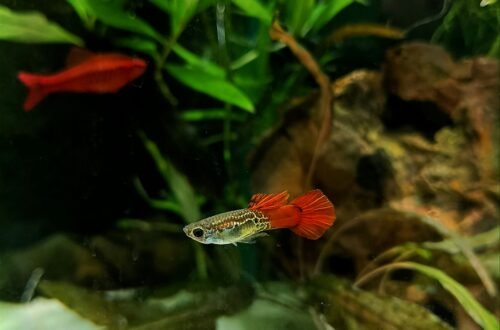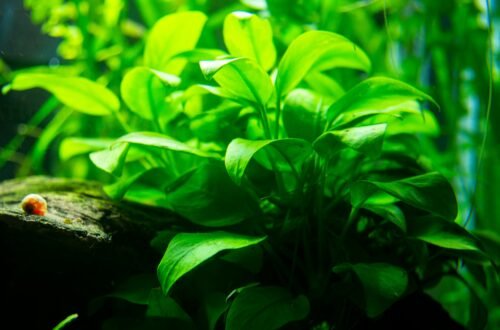Setting up a planted aquarium is like creating a little slice of nature within the walls of your home. Imagine a world where vibrant green plants sway gently in the current, colorful fish dart through the leaves, and the entire ecosystem thrives in harmony. It sounds serene, doesn’t it? But getting to that point requires some planning, a bit of patience, and a fair amount of knowledge. Don’t worry—by the end of this guide, you’ll have everything you need to start your planted aquarium journey.
Why Choose a Planted Aquarium?
Before we dive into the nuts and bolts of setting up a planted aquarium, let’s talk about why you might want one in the first place. For starters, planted aquariums are incredibly beautiful. The combination of lush plant life and vibrant fish creates a stunning visual display that’s hard to beat. But it’s not just about looks—planted tanks also offer a healthier environment for your fish. The plants help filter the water, absorb harmful chemicals, and provide oxygen, all of which contribute to a balanced ecosystem.
Planning Your Aquarium: The Key to Success
Like any good project, success in setting up a planted aquarium starts with careful planning. You need to think about the size of your tank, the types of plants and fish you want, and where the tank will be placed in your home.
Choosing the Right Tank Size
Size matters when it comes to aquariums. A larger tank is generally easier to manage because it’s more stable; small changes in water chemistry have less impact. For beginners, a tank size of around 20 to 30 gallons is ideal. It’s large enough to create a stable environment but not so big that it becomes overwhelming.
Deciding on the Tank Location
Where you place your tank is more important than you might think. It should be in a spot that doesn’t get direct sunlight, as too much sunlight can lead to algae problems. You also want to make sure it’s in a place where you can easily access it for maintenance. And, of course, it should be somewhere you can enjoy it every day!
Selecting Your Substrate: The Foundation of Your Aquarium
The substrate is the material that lines the bottom of your tank, and it’s crucial for the health of your plants. Think of it as the soil in your garden—without the right foundation, your plants won’t thrive.
Types of Substrate
There are a few different types of substrates you can use in a planted aquarium. Here are the most common ones:
- Gravel: While gravel can work in a planted tank, it’s not ideal because it doesn’t provide nutrients for the plants. However, it can be used if you add root tabs or nutrient-rich layers beneath it.
- Sand: Sand is a popular choice because it’s easy to work with and looks natural. Like gravel, though, it doesn’t contain nutrients, so you’ll need to supplement.
- Specialized Plant Substrate: This is the best option for a planted aquarium. It’s designed specifically for aquatic plants and is rich in nutrients that will help your plants grow strong and healthy.
Choosing and Preparing Your Plants
Now comes the fun part—choosing your plants! The plants you choose will determine the look of your aquarium, so take your time here.
Types of Plants
Aquatic plants can be grouped into three categories based on where they grow in the tank:
- Foreground Plants: These are small plants that grow at the front of the tank. They often spread out to create a carpet-like effect. Examples include dwarf baby tears and java moss.
- Midground Plants: These are medium-sized plants that add depth and fill out the middle of the tank. Examples include anubias and cryptocoryne.
- Background Plants: These taller plants grow at the back of the tank and create a lush backdrop. Examples include amazon swords and vallisneria.
Plant Preparation
Before planting, you’ll need to prepare your plants. Start by trimming any dead or damaged leaves. If your plants came in pots, remove them and gently separate the roots. It’s also a good idea to soak your plants in water for a few hours to remove any chemicals or pests.
Setting Up Your Aquarium: Step by Step
With your tank, substrate, and plants ready, it’s time to set up your aquarium. Here’s how to do it step by step.
Step 1: Clean the Tank
Start by thoroughly cleaning your tank with water. Avoid using soap or detergents, as they can leave harmful residues. If you need to, you can use a little vinegar to remove any stubborn stains, but be sure to rinse the tank well afterward.
Step 2: Add the Substrate
Next, add your substrate to the tank. If you’re using a specialized plant substrate, pour it in to a depth of about 2 to 3 inches. This gives your plants plenty of room to root and grow. You can create a slight slope, with the substrate deeper at the back, to add depth to your aquascape.
Step 3: Install the Equipment
Now it’s time to install your equipment. This includes your filter, heater, and lighting system. Make sure everything is securely in place before moving on to the next step. The filter will keep your water clean, the heater will maintain a stable temperature, and the lighting will provide the energy your plants need to photosynthesize.
Step 4: Fill the Tank with Water
Fill your tank with water slowly to avoid disturbing the substrate. You can place a plate or a plastic bag over the substrate and pour the water onto it to prevent the substrate from being displaced. It’s best to use dechlorinated water to ensure a safe environment for your plants and fish.
Step 5: Plant Your Aquarium
With the tank filled, you can start planting. Use aquascaping tools like tweezers to carefully place your plants in the substrate. Start with the background plants, then move on to the midground and foreground plants. Make sure to leave enough space between each plant so they have room to grow.
Step 6: Install the CO2 System (Optional)
If you’re serious about growing lush, vibrant plants, you might want to install a CO2 system. Plants use carbon dioxide to photosynthesize, and while they can get some CO2 from the water, a dedicated system will provide a more consistent supply.
Step 7: Cycle the Tank
Before adding fish, you need to cycle your tank. This process establishes beneficial bacteria that will break down fish waste and keep the water safe. Cycling can take anywhere from 2 to 8 weeks, so be patient. You can speed up the process by adding bacteria supplements or using filter media from an established tank.
Choosing Your Fish: Adding Life to Your Aquarium
Once your tank is cycled, it’s time to add fish. The fish you choose should be compatible with the plants you’ve selected and with each other. Some fish are notorious for nibbling on plants, so be sure to do your research.
Popular Fish for Planted Aquariums
Here are some fish that do well in planted tanks:
- Neon Tetras: These small, colorful fish are peaceful and look stunning against a green backdrop.
- Otocinclus Catfish: These little guys are great algae eaters and won’t bother your plants.
- Dwarf Gouramis: With their bright colors and calm nature, dwarf gouramis make a great addition to a planted tank.
- Amano Shrimp: While not technically fish, Amano shrimp are excellent at keeping algae under control and won’t harm your plants.
Maintaining Your Planted Aquarium
Once your aquarium is set up, the work isn’t over. Regular maintenance is key to keeping your tank healthy and beautiful.
Daily Maintenance
- Check the Equipment: Make sure your filter, heater, and lights are all working properly.
- Feed Your Fish: Be careful not to overfeed, as uneaten food can foul the water.
- Observe Your Tank: Take a few minutes each day to observe your tank. Look for signs of disease in your fish or plants, and check for any issues with the equipment.
Weekly Maintenance
- Water Changes: Perform a partial water change (about 20–30%) every week to keep the water quality high.
- Prune Your Plants: Trim any dead or overgrown leaves to keep your plants looking their best.
- Clean the Glass: Use an algae scraper to clean the inside of the glass if needed.
Monthly Maintenance
- Deep Clean the Substrate: Use a gravel vacuum to remove debris from the substrate without disturbing your plants too much.
- Check the Filter: Rinse the filter media in tank water (not tap water) to remove buildup without killing the beneficial bacteria.
Troubleshooting Common Problems
Even with the best care, you might encounter some problems along the way. Here are a few common issues and how to deal with them.
Algae Overgrowth
Algae is a common problem in planted tanks. To control it, make sure your tank isn’t getting too much light, and avoid overfeeding your fish. You can also add algae-eating fish or shrimp to help keep it under control.
Plant Melting
Sometimes new plants will lose leaves or appear to “melt” after being planted. This is often a sign of transplant shock. Be patient—if the plant is healthy, it should bounce back after a few weeks.
Fish Stress
If your fish seem stressed (hiding, not eating, or showing unusual behavior), check your water parameters. Stress is often caused by poor water quality, so make sure everything is within the recommended ranges.
Setting up a planted aquarium is a rewarding experience that brings a little bit of nature into your home. While it requires some effort and patience, the result is a beautiful, thriving ecosystem that you can enjoy every day. Whether you’re a beginner or an experienced aquarist, following these steps will help you create a planted tank that’s both healthy and stunning.
FAQs
- Do I need CO2 for a planted aquarium?
- While not strictly necessary, CO2 can significantly improve plant growth and health, especially in tanks with high lighting.
- How long should I keep the lights on in my planted tank?
- Aim for about 8-10 hours of light per day. Too much light can cause algae growth, while too little can hinder plant growth.
- Can I use tap water for my planted aquarium?
- Yes, but it’s important to treat it with a water conditioner to remove chlorine and chloramine, which are harmful to fish and plants.
- How often should I fertilize my plants?
- This depends on the types of plants and the substrate you’re using, but generally, a weekly liquid fertilizer should be sufficient for most planted tanks.
- What are the best beginner plants for a planted aquarium?
- Easy-to-grow plants like java fern, anubias, and hornwort are great for beginners as they require minimal care and can thrive in a range of conditions.






